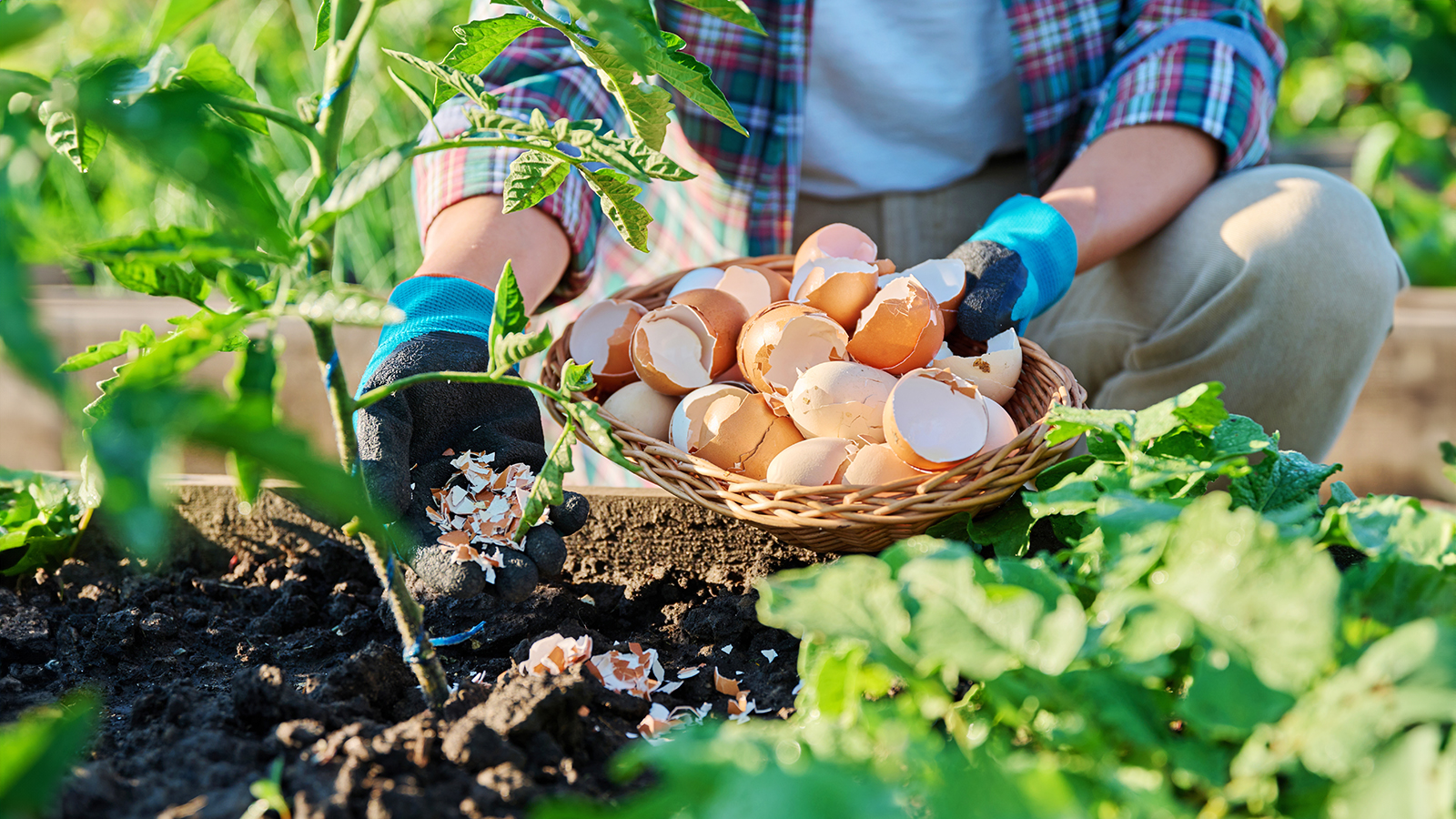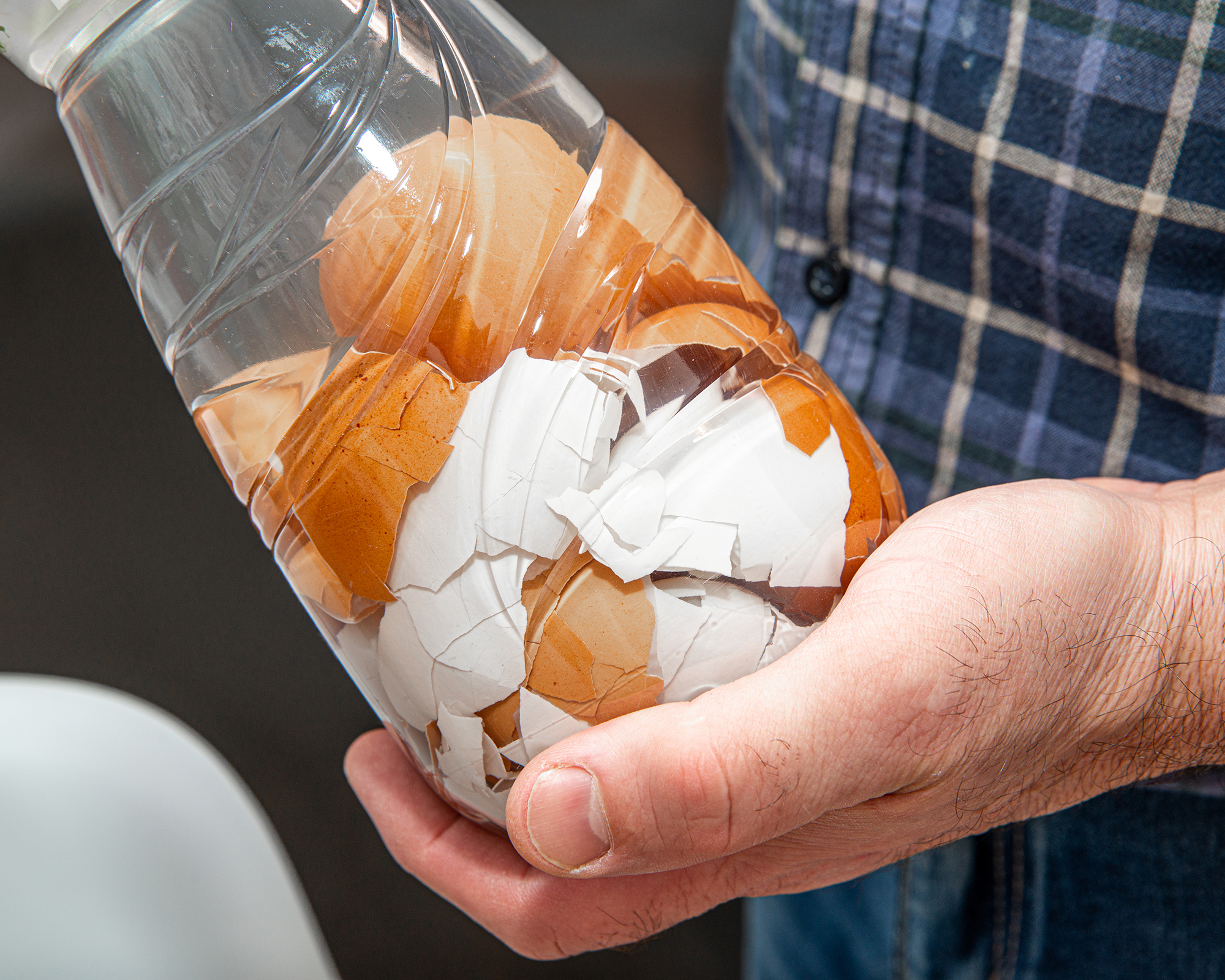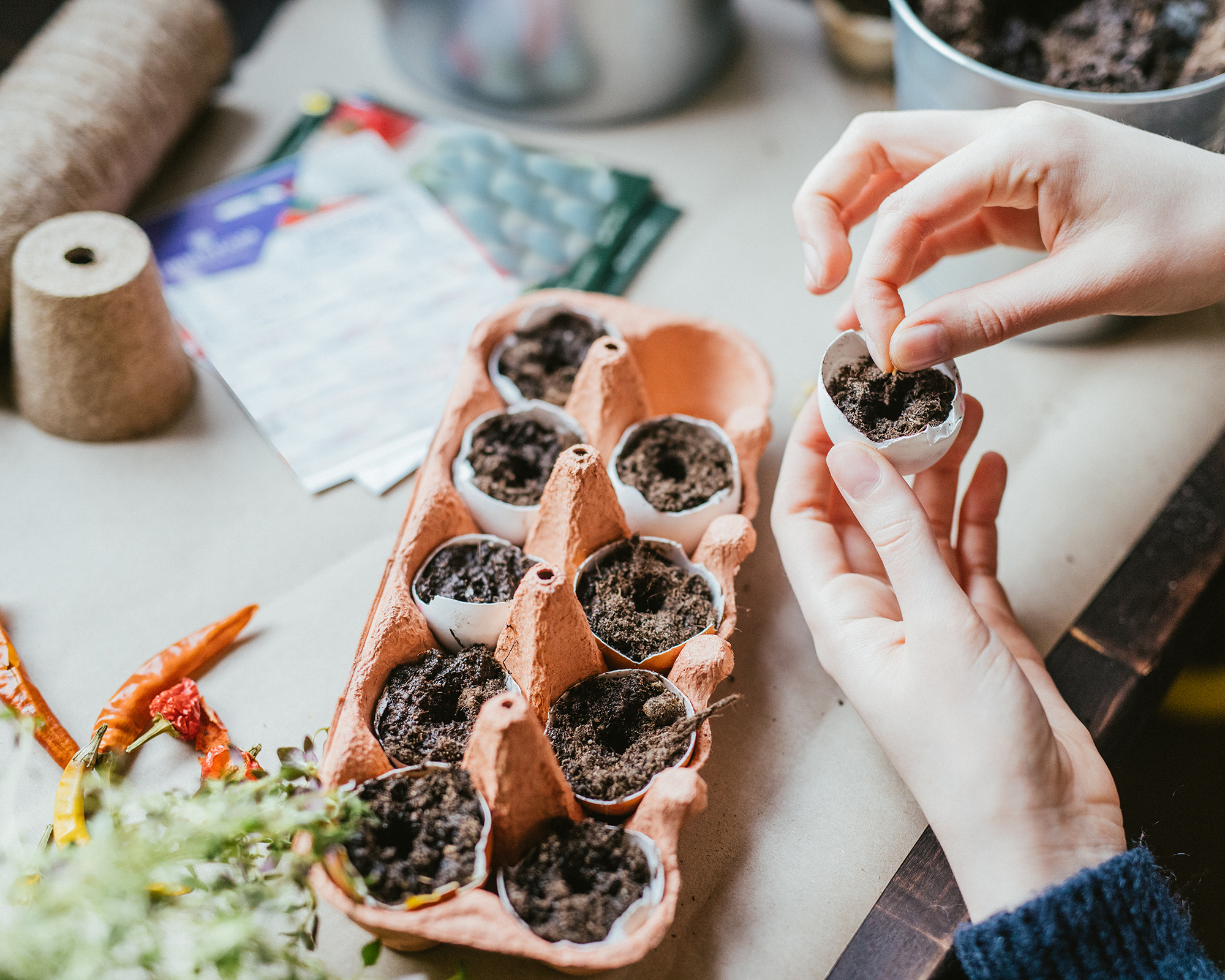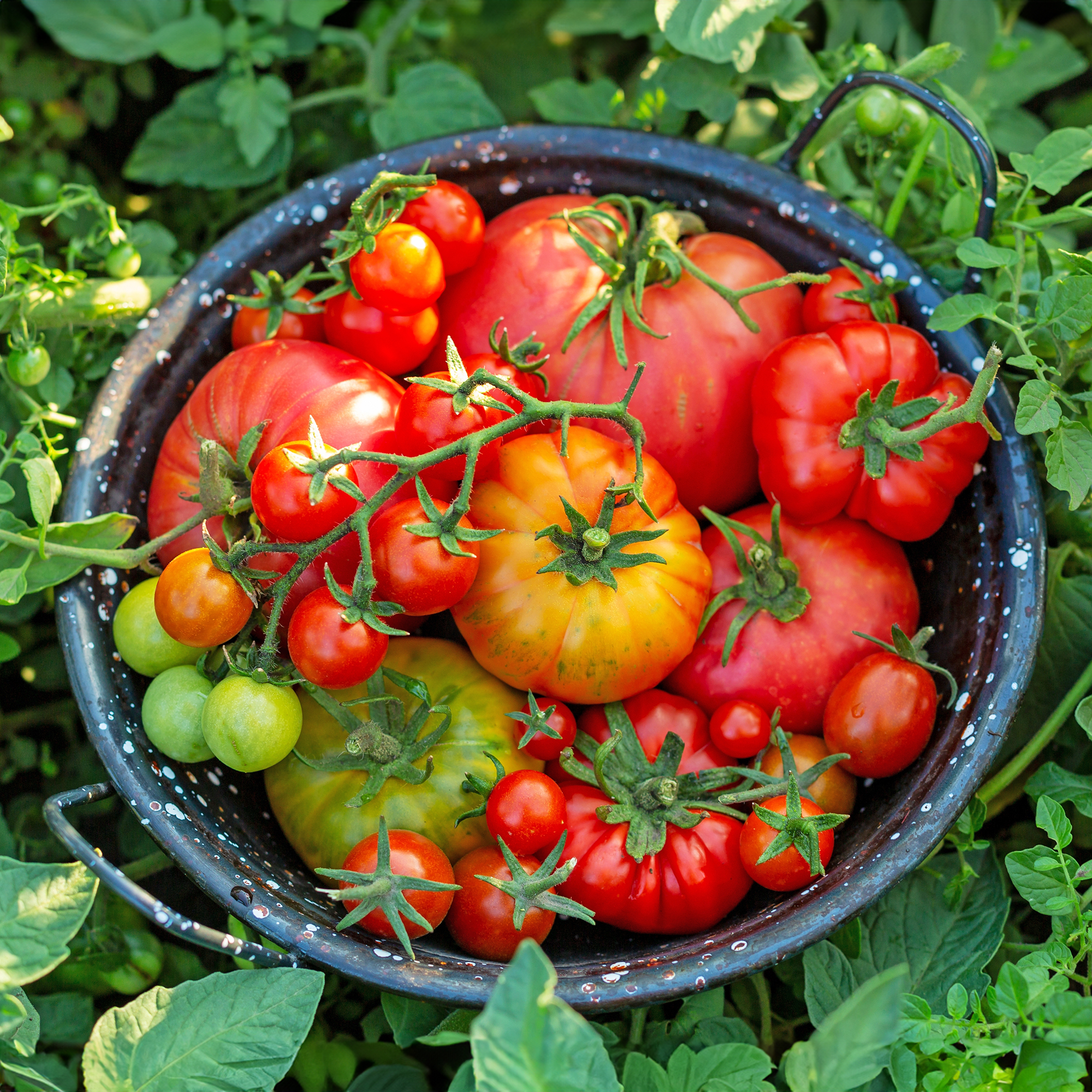How To Use Eggshells On Tomato Plants: The Secret To Bigger Yields & Preventing Disease
Stop throwing away eggshells! Instead of wasting them, use them to improve the health of your tomato plants, prevent blossom end rot, and boost yields.


The next time you crack an egg in the kitchen, save the shell. Eggshells contain important nutrients that can enrich your compost pile or feed plants, including tomatoes. Using eggshells on tomatoes benefits plants in several ways, from improving overall health to repelling pests and preventing disease.
When choosing the best fertilizer for tomatoes, it's important to have all essential macro and micronutrients covered, including nitrogen, phosphorus, and potassium (known as NPK), as well as calcium, magnesium, iron, sulfur, and other trace elements. Eggshells mainly contain calcium, which is essential in the fight to prevent blossom end rot. They are a key ingredient in many homemade tomato fertilizer recipes, but can also be used to supplement commercial feeds.
If you want to learn how to grow tomatoes like a pro, then fertilizing is a great place to start, as getting the right balance of nutrients is crucial to producing healthy, disease-resistant plants with abundant fruit.
How Can Eggshells Benefit Your Tomato Plants?
The primary purpose of saving eggshells for your tomato plants is to use them as a type of natural fertilizer, but there are other advantages. Here are a few of the benefits you can get from eggshells, depending on how you use them for your tomato plants:
- Eggshells add calcium and other nutrients, naturally, to the soil. Eggshells are made from a natural, organic material that is particularly rich in calcium. When ground down and added to the soil, eggshells add these nutrients that your tomato plants take up through their roots.
- Increasing calcium for tomato plants will help prevent blossom end rot. This destructive disease causes the fruits to rot from the blossom end (the opposite end from the stem). It is caused by calcium deficiency.
- Adding broken eggshells to the soil improves its structure by loosening it naturally. This allows more oxygen and water to flow through, helping to create the best soil for tomatoes.
- If your soil is acidic, the alkalinity of eggshells can reduce the soil pH to some extent.
- Broken eggshells in the soil can also deter slugs. The sharp edges and drying effects of the shells keep them out of the soil around tomato plants.
Are Eggshells Enough to Feed Tomatoes?
While eggshells can be a useful natural fertilizer and preventative measure against blossom end rot, they don’t provide enough nutrients to be your only fertilizer. Tomatoes are heavy feeders and need a lot of nutrients throughout the growing season. Use eggshells as a supplement to compost or an appropriate store-bought fertilizer.
How to Prepare Eggshells for Tomato Plants
The first step in using eggshells to feed plants is to wash and dry them. This isn’t strictly necessary, but it will make your job of creating eggshell fertilizer easier and cleaner. You’ll probably want to save up your eggshells as you use them. If you don’t wash them, the egg residue can rot and get stinky.
Clean, dry eggshells are also easier to pulverize, which is the next step. You want to crush or grind the shells into the smallest pieces possible. Like compost, the shells need to be broken down pretty well to be incorporated into the soil and for the plant roots to take up nutrients from them.
Sign up for the Gardening Know How newsletter today and receive a free copy of our e-book "How to Grow Delicious Tomatoes".
For the best results, use a blender or food processor to pulverize the eggshells into a powder. Add this to the planting holes if you’re using transplants or mix some into the compost or fill-in soil. If your tomatoes are already in the ground, sprinkle eggshell powder on the soil at the base of the plants. Work it into the soil a little with a trowel or your hands and water thoroughly.

Avoid These Eggshell Fertilizer Mistakes
To be a useful fertilizer, the eggshells really need to be pulverized into a fine powder. It won’t hurt to add bigger pieces of shell to the soil, but this won’t add much usable calcium. On the other hand, working with eggshell powder can be tricky and potentially harmful. You want to avoid breathing in the dust and powder you’ve created.
When making powdered eggshell, don’t take the lid off the blender until the dust has settled. Take care when handling the powder you’ve created. Use it gently to avoid creating dust you might inhale.
How to Use Eggshells as a Soil Additive
You don’t need to turn the eggshells into a fine powder if you’re using them as a soil additive rather than a fertilizer. Wash and dry the shells and crush them into small pieces. Mix them into the soil or compost you’ll use when planting tomatoes.
If you want to use eggshells to deter slugs, mix them into the surface of the soil around the base of each tomato plant. You can also strategically place some bigger pieces of shell in the soil so that they get in the way of a slug on the move toward your tomato plant.

Bonus: Use Eggshells for Seed Starting
Here’s another fun way to use eggshells: use them as natural containers for starting tomato seeds indoors. The trick here is to open the egg in such a way that you can still use the shell. When using the eggs, cut the shell toward the skinnier end. This will leave you with a sizable cup. Once cleaned out, you can add a good potting mix and start your plants as you would with a seed tray: keep the soil moist and warm while the seeds germinate.
When it’s time to transplant, crush up the shell a little if the roots haven’t already broken through it. Add the entire shell to the planting hole outside. The shell will break up the soil and add some nutrients as it decomposes.

Mary Ellen Ellis has been gardening for over 20 years. With degrees in Chemistry and Biology, Mary Ellen's specialties are flowers, native plants, and herbs.
